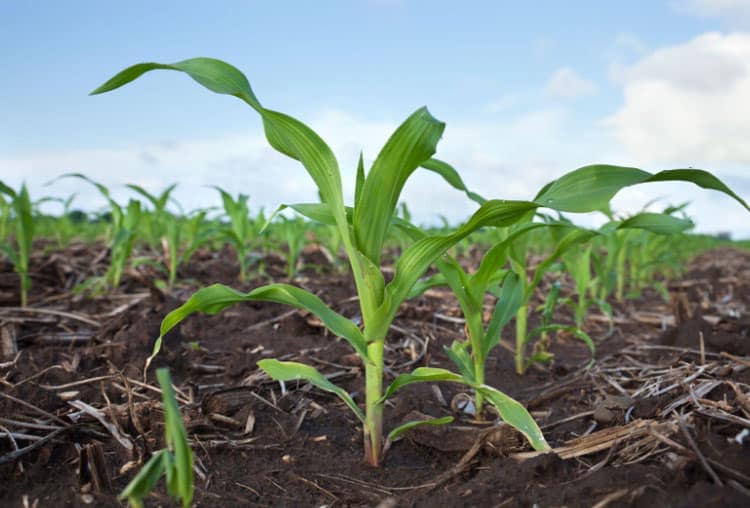How to Use Tillable to Find Recent Farm Sale Price Data Near You

If you have ever tried to find prices for recently sold farmland online, you already know that it is nearly impossible to find. Whether it is an auction or a farm land listing that sold, Tillable has created the easiest tool online to see farmland sale data from the past 3 years. Tillable’s new search filters for recently sold farmland maps help customers make smart decisions with ease.
USDA’s annual June Area Survey indicates that farmland values began rising in 1988 and, except for single-year declines in 2009 and 2016, have continued rising. After adjusting historical data for inflation, however, farmland values did not begin to increase until 1993, and between 2016 and 2020 were 1.3 percent below their 2016 level on average. There is a regional variation in both farmland value levels and growth trends. The USDA Economic Research Service studies trends in farmland values, assessing the impact of both macroeconomic factors (such as interest rates and the prices of alternative investments) and parcel-specific attributes (such as soil quality, government payments, rural amenity value and urban proximity). U.S. farmland values remained high in 2020, averaging $3,160 per acre, a small decrease of 0.8 percent compared with 2019.
Current (2022) US farmland averages about $4,442 per acre with a 4.4% average land appreciation. Regional farmland real estate values vary widely because of differences in general economic conditions, local farm economic conditions, government policy, and local geographic conditions that affect returns to farming. For example, in the Corn Belt, farmland real estate values are nearly twice the national average, while farmland real estate values in the Mountain region are less than half the national average. Farmland real estate growth trends also vary by region. For example, between 2019 and 2020, inflation-adjusted farm real estate values fell in the Northern Plains (down 3.1 percent to $2,120) and the Lake States (down 1.6 percent to $4,860).
In contrast, farm real estate values appreciated in the Southern Plains (up 1.1 percent to $2,110) and the Mountain States (up 0.9 percent to $1,240). Between 2016 and 2020, farmland values increased the most in the Pacific States (11.3 percent), and fell the most in the Northern Plains (-10.0 percent). Farmland real estate values vary according to agricultural use as well. Cropland maintains a premium over pastureland due to mostly higher per-acre returns to crop production. Between 2019 and 2020, U.S. average cropland and pastureland values both fell by 0.8 percent, to $4,100 and $1,400 per acre, respectively. The difference between cropland and pastureland values also vary by region. Cropland values are higher than pastureland values in every region except for the Southeast. In the Pacific region, cropland was worth four times as much as pastureland in 2020 ($7,240 vs $1,750.) Since 2016, cropland values have risen the most in Pacific States (6.5 percent), while they have fallen the most in the Northern Plains (-11.7 percent). Over the same timeframe, pastureland values have increased the most in the Southern Plains (3.5 percent), and have fallen the most in the Corn Belt (-6.2 percent).
The least expensive state to purchase farmland in is Montana with an average of $825 per acre, just short of Oklahoma which is around $1,209 per acre. North Dakota, Wyoming, Kansas and Nevada are in the same cost per acre bracket for those seeking to get the best bang for their buck. The most expensive state to build your farm in is New Jersey at an average of $13,153 per acre. California is a closed second at $9,350 per acre with Arizona, Delaware, Maryland and Florida are next in line in the $6,000-$7,000 per acre dollar range.
Farm rental rates by state are reflective of land costs, as California remains at the top of the price chart with an average of $317 per acre. Maine is the cheapest state to rent farmland at the small price of only $10 an acre. Connecticut, Vermont, New Hampshire, and Oklahoma are in the $20-$30 per acre range. Rental rates measure the value of using land for agricultural production. Between 2019 and 2020, average U.S. cropland rental rates decreased by 1.5 percent to $139. Cropland rental rates increased the most in the Southeast (up 5.4 percent to $94 per acre) and the Delta States (up 2.8 percent to $115 per acre). Cropland rental rates fell the most in the Appalachian States (down 2.7 percent to $101 per acre) and the Northeast (down 1.9 percent to $88 per acre).
One of the best and easiest ways to find farmland sale prices is through the Tillable organization’s online program. Tillable’s sold farmland map now has a new search option filter to better help you find recently sold farms you are most interested in. The radius search feature allows you to see sold farms within x miles of a central point on map. The next time you want to check out nearby farm sales, you can now filter by distance from a set location on the map. Use the slider to search within 0 to 100 miles of your location and set up a pin on the map that will create a radius of all sold farms in that area. Click on individual farm sales to see details about the land and sale. You can easily drag the center point of your map to a new location in order to find all of the local farm sales in the area.
You can also filter your search by distance, acreage range, sold date, and soil rating. In addition, the url of your search is sharable with a simple copy and paste of the link provided, so that you can ensure that your team, company, or family is all on the same page. If you are looking to sell your farm, Tillable’s search tool helps sellers find the best market value. Give it a try today, here.
Have you read?
A Whole New World? Dealing With Office Space Decisions in the Current Landscape by Andrew Flint.
3 Ways You Can Excel As A Leader In 2023 by Dr. Samantha Madhosingh.
The Top Issue Your Company Should Be Focused On For 2023 by Brittany Hodak.
5 Essential Factors for Finding the Way in Your New Business by Jon Hutson.
Bring the best of the CEOWORLD magazine's global journalism to audiences in the United States and around the world. - Add CEOWORLD magazine to your Google News feed.
Follow CEOWORLD magazine headlines on: Google News, LinkedIn, Twitter, and Facebook.
Copyright 2025 The CEOWORLD magazine. All rights reserved. This material (and any extract from it) must not be copied, redistributed or placed on any website, without CEOWORLD magazine' prior written consent. For media queries, please contact: info@ceoworld.biz








